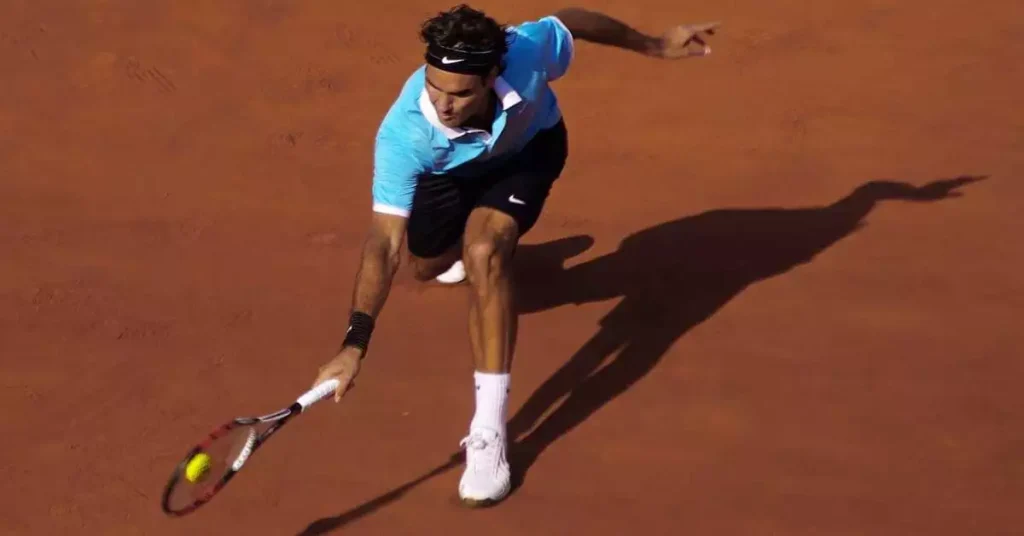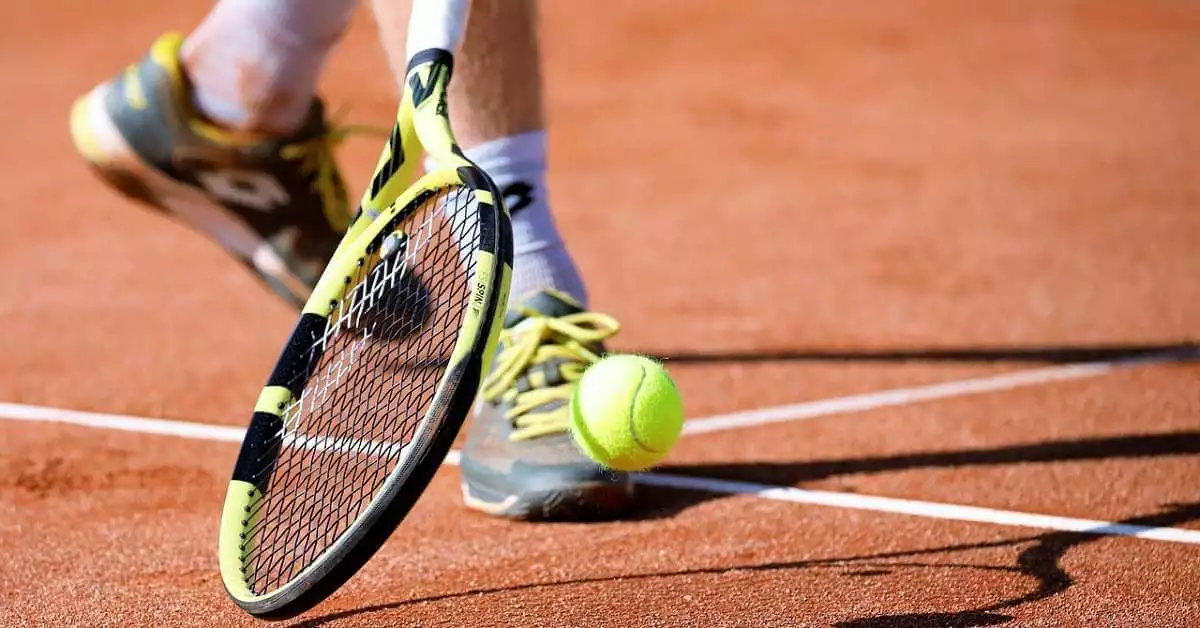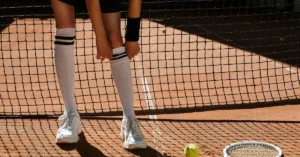Tennis is a sport that has witnessed some of the most incredible comebacks in history. These inspiring moments have left an indelible mark on the game, and they continue to be talked about and celebrated by fans and players alike. From epic battles on the court to emotional triumphs against all odds, the greatest tennis comebacks in history have captured the hearts and minds of millions around the world.
Inspirational Women in Tennis
Steffi Graf’s Unforgettable Moments
Steffi Graf, one of the greatest female tennis players of all time, had many unforgettable moments during her illustrious career. She won 22 Grand Slam titles and spent a record 377 weeks as the world No. 1 player. One of her most inspiring tennis comebacks came at the 1995 Wimbledon Championships, where she defeated Arantxa Sanchez Vicario in a thrilling three-set final. Graf was down 5-4 in the final set and saved a championship point before winning the match 4-6, 6-1, 7-5. Her resilience and mental strength in that match were truly remarkable.
Monica Seles’s Resilient Return
Monica Seles was on top of the tennis world in the early 1990s, winning eight Grand Slam titles before the age of 20. However, her career was derailed when she was stabbed by a fan of her rival, Steffi Graf, during a match in 1993. Seles took a two-year break from the sport to recover from the physical and emotional trauma of the attack. She made a triumphant return to tennis in 1995, winning the Australian Open in her first Grand Slam tournament back. Seles showed incredible resilience and strength to overcome the trauma and return to the top of the tennis world.
Kim Clijsters’ Post-Motherhood Success

Kim Clijsters was already a successful tennis player before she took a break from the sport to start a family. She won the US Open in 2005 and 2009 before retiring in 2012. However, in 2009, Clijsters gave birth to her first child and took a break from tennis to focus on motherhood. She made a remarkable comeback in 2009, winning the US Open in just her third tournament back. Clijsters went on to win two more Grand Slam titles after becoming a mother, showing that women can still be successful athletes after giving birth.
Jennifer Capriati’s Career Revival
Jennifer Capriati burst onto the tennis scene as a teenager in the early 1990s, winning three Grand Slam titles before the age of 18. However, she struggled with personal issues and took a break from tennis in 1993. Capriati made a remarkable comeback in the early 2000s, winning the Australian Open in 2001 and 2002 and the French Open in 2001. Her career revival was a testament to her mental strength and resilience, and she remains an inspiration to many in the tennis world.
Andre Agassi’s Inspiring Comeback
Andre Agassi’s tennis career is full of inspiring moments, but perhaps the most memorable one is his comeback in the 1999 French Open. Agassi was already a prominent figure in tennis but had never clinched the French Open. In 1999, he found himself two sets down 1-6, 2-6 against Ukrainian Andrei Medvedev.
1999 French Open Victory
What followed was one of the most dramatic tennis comebacks, as Agassi won the next three sets 6-4, 6-3, 6-4 to complete a career Grand Slam. Agassi’s determination to win was evident in his play, as he fought back from a seemingly insurmountable deficit to clinch the title.
Agassi’s comeback was not just about his skill on the court, but also his mental fortitude. He had to overcome the pressure of being down two sets and the possibility of losing yet another French Open final. However, he remained focused and determined, and his perseverance paid off in the end.
Agassi’s victory at the 1999 French Open is a testament to his resilience and determination. It is a reminder that even when things seem impossible, with hard work and perseverance, one can achieve greatness.
Roger Federer’s Remarkable Returns
Roger Federer is one of the greatest tennis players of all time, with an impressive record of 20 Grand Slam titles. He has had his fair share of injuries and setbacks, but he has always managed to come back stronger. Here are two of his most remarkable tennis comebacks.
2001 Wimbledon Triumph
In 2001, Roger Federer was just 19 years old and ranked 15th in the world. He had never won a Grand Slam title, but he was already showing signs of greatness. At Wimbledon that year, he faced seven-time champion Pete Sampras in the fourth round. Sampras was the undisputed king of grass court tennis, and many thought Federer was too young and inexperienced to beat him.
But Federer had other ideas. He played with confidence and skill beyond his years, and he shocked the tennis world by defeating Sampras in five sets. It was a turning point in his career, and he went on to win his first Grand Slam title at Wimbledon the following year.
2019 Wimbledon Fight

In 2019, Federer was 37 years old and many thought his best days were behind him. He had not won a Grand Slam title since the 2018 Australian Open, and he had lost to Novak Djokovic in the final of the previous year’s Wimbledon.
But Federer was determined to prove his critics wrong. He fought his way through the draw, and in the final he faced Djokovic once again. The match was an emotional rollercoaster, with both players showing incredible skill and determination. Federer had two match points in the fifth set, but Djokovic managed to save them both and eventually won the match in a tiebreak.
Despite the heartbreaking loss, Federer’s performance was a testament to his resilience and his ability to compete at the highest level even in his late 30s. It was a reminder of why he is considered one of the greatest tennis players of all time.
In both of these comebacks, Federer showed that he has the mental and physical toughness to overcome adversity and achieve greatness on the tennis court. His ability to bounce back from setbacks and injuries has made him an inspiration to fans around the world.
Rafael Nadal’s Resilient Rallies
Rafael Nadal is widely regarded as one of the greatest tennis players of all time, and his resilience on the court is a major reason for his success. Nadal’s ability to come back from seemingly insurmountable deficits has earned him a reputation as one of the most mentally tough players in the game.
One of Nadal’s most famous tennis comebacks came in the 2013 French Open semifinals against Novak Djokovic. After losing the first two sets, Nadal rallied to win the third set in a tiebreak. Despite Djokovic’s best efforts to mount a comeback of his own, Nadal held on to win the match in four sets and advance to the final.
Nadal’s resilience was on full display in the third set tiebreak, as he fought off several set points to keep the match alive. His ability to stay focused and maintain his composure in high-pressure situations is a testament to his mental strength and competitive spirit.
Other Noteworthy Tennis Comebacks
Ivan Lendl’s 1995 Australian Open
Ivan Lendl’s 1995 Australian Open comeback was one of the most inspiring moments in tennis history. Lendl had been out of the game for almost a year due to a back injury, and many thought his career was over. However, Lendl showed his determination and returned to the court to compete in the Australian Open.
In the tournament, Lendl faced some tough opponents, including Michael Chang and Boris Becker. However, he managed to reach the final, where he faced Pete Sampras. Despite being the underdog, Lendl played some of his best tennis and won the match in straight sets. Lendl’s emotional reaction after the match showed just how much the win meant to him.
Jimmy Connors’ Memorable Moments
Jimmy Connors is known for his never-say-die attitude on the court, and he produced some of the most memorable tennis comebacks in history. One of his most famous tennis comebacks came in the 1991 U.S. Open, where he was 39 years old and ranked 174 in the world.
In the semi-finals, he went up against Jim Courier, and despite being down two sets to love, Connors didn’t let that discourage him. He fought back and managed to win the match in five sets, much to the excitement of the crowd. It was a great display of determination and skill, and a testament to Connors’ talent as a tennis player.
Ivanisevic’s 2001 Wimbledon Win
Goran Ivanisevic’s 2001 Wimbledon win was one of the most emotional moments in tennis history. Ivanisevic had been a runner-up at Wimbledon three times before, and many thought he would never win the tournament. However, he showed his determination and fought his way to the final.
In the final, Ivanisevic faced Pat Rafter, and the match was a closely contested affair. However, Ivanisevic managed to win the match in five sets, much to the delight of the crowd. His emotional reaction after the match showed just how much the win meant to him, and it remains one of the most inspiring moments in tennis history.
The Power of Mental Fortitude
Tennis is a sport that requires not only physical fitness but also mental fortitude. It is a game of strategy, agility, and endurance that can put even the strongest players to the test. Mental fortitude is the ability to remain strong and resilient in the face of adversity. It is what separates the champions from the underdogs and what makes the most famous tennis comebacks so inspiring.
When it comes to tennis, mental fortitude is crucial. Players must be able to handle the pressure of the game, stay focused, and remain calm under stress. They must be able to bounce back from losses and setbacks and keep pushing forward. This is what makes the most famous tennis comebacks so impressive – the ability to overcome the odds and come out on top.
Take, for example, the 2017 Australian Open final between Roger Federer and Rafael Nadal. Federer had not won a Grand Slam title in nearly five years and was considered by many to be past his prime. Nadal, on the other hand, was in top form and had won the French Open just a few months prior. Despite this, Federer was able to dig deep and pull off an incredible comeback, winning the match in five sets.
Another example is the 2008 Wimbledon final between Nadal and Federer. Nadal was the underdog, having never won a Wimbledon title before and facing off against the reigning champion. Despite this, Nadal was able to stay focused and resilient, ultimately winning the match in five sets and becoming the first Spanish player to win Wimbledon.
These examples demonstrate the power of mental fortitude in tennis. It is what allows players to overcome the odds, come back from setbacks, and ultimately achieve greatness. Whether you are an underdog or a champion, mental fortitude is crucial in the game of tennis.
The Role of Physical Resilience
Physical resilience plays a crucial role in tennis comebacks. Many of the most famous tennis comebacks in history were achieved by players who demonstrated remarkable physical resilience on the court. This resilience allowed them to overcome injuries, fatigue, and other physical challenges to turn the match around and emerge victorious.
One example of this is Rafael Nadal’s comeback in the 2013 US Open final against Novak Djokovic. Nadal had been struggling with a knee injury for much of the year and was not expected to perform at his best. However, he showed incredible resilience on the court, battling through pain and fatigue to win the match in four sets and claim his second US Open title.
Another example is Roger Federer’s comeback in the 2017 Australian Open final against Rafael Nadal. Federer had been out of action for several months with a knee injury and was not expected to perform at his best. However, he showed remarkable agility and resilience on the court, moving quickly and smoothly to outmaneuver his opponent and win the match in five sets.
In both of these examples, physical resilience played a key role in the players’ ability to come back from behind and win the match. By demonstrating their ability to overcome physical challenges and push through pain and fatigue, these players inspired fans around the world and cemented their place in tennis history.
Impact of Tennis Comebacks
Tennis comebacks have a significant impact on the tennis world, players, and fans. These moments of resilience and determination inspire people to push themselves beyond their limits, both on and off the court. They are not only a testament to the player’s skill and talent but also their mental strength and ability to overcome adversity.
Tennis comebacks are not just about winning a match; they are about making history. These moments become a part of tennis history, and they are remembered for years to come. For example, the 1999 French Open final between Andre Agassi and Andrei Medvedev is still considered one of the most dramatic tennis comebacks of all time. Agassi’s ability to come back from two sets down to win the match and complete a career Grand Slam is inspiring and memorable.
Tennis comebacks also have a significant impact on the players themselves. They give players a sense of accomplishment and confidence that they can overcome any obstacle. These moments can also be a turning point in a player’s career, giving them the momentum they need to achieve greater success.
Tennis comebacks can also have an impact on the court. When a player comes back from a significant deficit, it can change the momentum of the match and put pressure on their opponent. This can lead to unforced errors and a loss of focus, giving the comeback player a chance to take control of the match.
FAQ
What are some of the most famous tennis comebacks in history?
There have been many famous tennis comebacks throughout history, but some of the most notable ones include Roger Federer’s comeback against Rafael Nadal in the 2017 Australian Open final, where he came back from a 1-3 deficit in the fifth set to win the match. Another famous comeback is Bjorn Borg’s victory over John McEnroe in the 1980 Wimbledon final, where he saved five match points to win the match in five sets.
Who holds the record for the most wins from 2 sets down?
The player who holds the record for the most wins from 2 sets down in men’s tennis is Roger Federer, with 10 victories. In women’s tennis, Monica Seles holds the record with 14 wins from 2 sets down.
What is considered the greatest comeback in tennis history?
There are many tennis comebacks that can be considered the greatest in history, but one of the most famous is the 2008 Wimbledon final between Roger Federer and Rafael Nadal. Federer was down two sets to love and faced two championship points in the fourth set, but he managed to come back and win the match in five sets.
Has anyone ever come back from a 5-0 deficit in tennis?
Yes, there have been players who have come back from a 5-0 deficit in tennis. One of the most famous examples is Andre Agassi, who came back from a 5-0 deficit in the third set to win the 1999 French Open final against Andrei Medvedev. Another example is Roger Federer, who came back from a 5-0 deficit in the first set to win the 2005 Miami Masters final against Rafael Nadal.
What are some of the most memorable tennis comebacks in history, and what made them so special? Are there any comebacks that you’ve experienced personally on the court that you’re particularly proud of? Share your thoughts and experiences on the topic in the comments section below.







